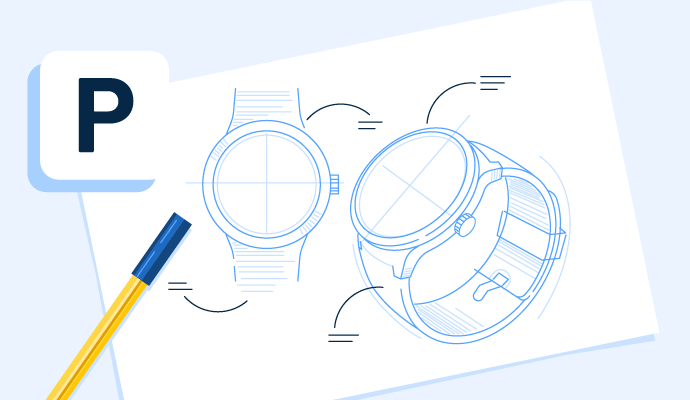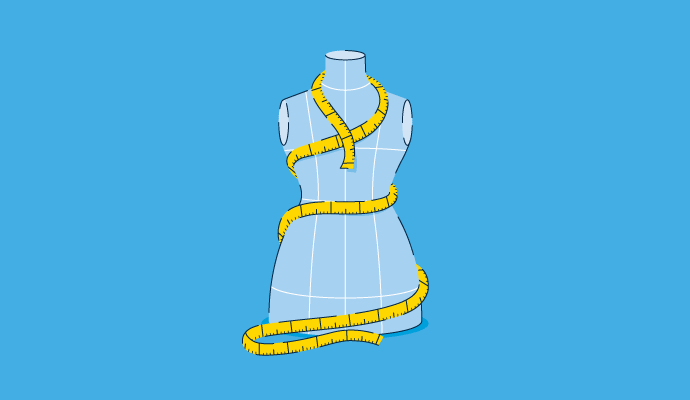What is product design?
Product design is the process of creating a product. It encompasses every stage of creation, from initial concept to launch.
All good product design comes down to identifying a problem and developing a solution. From there, beta testers provide feedback that refines the design during prototyping.
Throughout the product design process, the designer performs different roles to gather the best information for the final design. User research, marketing data, competitive analysis, and engineering all play essential roles. Product and machine design software can assist throughout the process, in addition to producing 3D models of what the product may look like once complete.
Types of product design
The process of designing a product depends on what is being created. Most products fall under three main types of product design:
- Process design focuses on the process that takes a user from a starting to an ending point. Ordering something online, booking a travel ticket, or signing up for a new service are all steps put together by product designers.
- Interface design uses a human-first approach. The product’s function should guide a user through every interaction and make every step instinctive and easy to use. Interface design is common for designing ATMs or mobile apps.
- System design applies to digital and real-life products. This considers the customer’s intuition and the commercial goals of a product when planning a design. A store layout, either online or offline, is an example of system design.
Basic elements of product design
Depending on what type of design is being used and the end product being created, a product will go through several stages of development. This includes:
- Customer journey mapping. The goal in this phase is to understand customer pain points and develop solutions. To be successful at this stage, the designer’s vision for the customer’s behavior before, during, and after using a product must be clearly articulated.
- Wireframing is a two-dimensional representation of what a product will look like. These rough sketches take into account the customer journey and show exactly how a product will solve the customer’s problem. Wireframes can be built for both physical and digital products.
- Prototyping is the creation of a test version of the product. This prototype will be shown to select users to gather feedback and make changes before the final product design goes into development.
- Minimum viable product development. Once changes have been made to the design based on prototype feedback, the product is almost ready to launch. The goal is to get the product to its minimum viable point. This is a scaled-back version of what the final design will be, but with all the core features that have the biggest impact on solving the customer’s problem. Any extra features on the product can be added later, ahead of the product's official launch. The minimum viable product is quicker to create and ship than the finalized product but still fulfills the consumer's needs. Any additional feedback can be incorporated based on experiences using the product in its almost-ready state.
Benefits of product design
Creating a product from nothing is challenging, but without careful product design, key elements will be missed, and the likelihood of the product failing once it reaches the market are much higher. Focusing on product design from the outset means:
- Greater customer satisfaction. Solving the customer’s problem is one part of product design. The overall aesthetic is often important to the customer, too, especially for physical products. Product design provides the time and budget for creating a functional and eye-catching product that users will want to purchase.
- Improved product performance and sales. Successful product design takes into account the different needs of the customer and works to address those issues before going to market. An all-encompassing solution for the customer means increased sales, especially if the new product is unique to its industry.
- Lower production costs. Working through each stage of product design diligently and addressing issues as they arise means the company saves money before a product reaches the production stages.
- Minimal waste. Without product design, companies can waste money and materials on different prototypes. Carefully planning the product design from the outset saves on these costs by addressing design and materials issues before prototypes are manufactured.
Best practices in product design
Regardless of what the final product is or which industry and customer it supports, all product designers should incorporate these three best practices into their work.
- Determine why the product matters. All product design should come back to the question of “What problem is this product solving?” From there, the design should be broken down into feasible, desirable, and viable features.
- Build a relationship with customers. Knowing a product’s potential audience as well as possible is a key part of product design. Companies need customer feedback to refine a product and work toward its future success.
- Understand the product’s place in the market. The connection between a product and a customer is the closest interaction a brand can have with their audience. At the earliest stages of product design, a business should know exactly who its competitors are and where the new product fits into the wider industry.
Work with experienced teams through product design services to take your new idea from ideation to manufacture.

Holly Landis
Holly Landis is a freelance writer for G2. She also specializes in being a digital marketing consultant, focusing in on-page SEO, copy, and content writing. She works with SMEs and creative businesses that want to be more intentional with their digital strategies and grow organically on channels they own. As a Brit now living in the USA, you'll usually find her drinking copious amounts of tea in her cherished Anne Boleyn mug while watching endless reruns of Parks and Rec.





















